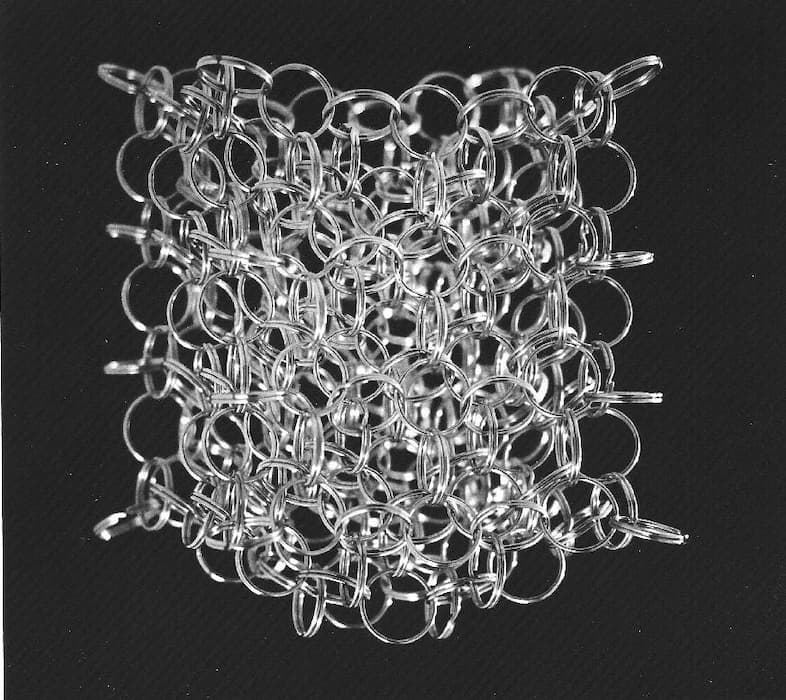Einstein’s theory of general relativity, where gravity is caused by the curvature of space-time, is awesome. It has been confirmed to an incredible level of precision, extending to fifteen significant figures in some cases. One of its most amazing predictions is the existence of gravitational waves: small disturbances in space-time that travel freely. These very waves are now detected regularly by the LIGO/VIRGO experiments.
But we know that general relativity is incomplete. It works well when the quantum effects of space-time are small, which is almost always the case. But when the quantum effects of space-time become large we need a better theory: a theory of “quantum gravity”.
An illustration of the early Universe as consisting of quantum foam, where quantum fluctuations are
Since we don’t yet know the theory of quantum gravity, we don’t really know what space, and time, are. We have several candidate theories for quantum gravity, but none of them is generally accepted. Nevertheless, based on the existing approaches, we can speculate what might happen with space and time in a theory of quantum gravity. Here, I have collected the ten most mind-boggling speculations for you:
1. In quantum gravity we expect that space-time will fluctuate wildly even in the absence of matter. In the quantum world, the vacuum never rests, and neither do space and time.
On the smallest quantum scales, the Universe might be filled with tiny, microscopic, low-mass black holes. These holes could connect or extend inward in very interesting fashions.
2. The quantum space-time could be full with microscopic black holes. Weirder still, it could have wormholes or give rise to baby universes, which are small bubbles that pinch off from the mother universe.
3. And since this is a quantum theory, space-time could do all these things simultaneously! It could both create a baby universe and not create one at the same time.
The fabric of spacetime may not be a fabric at all, but may be made of discrete components that only
4. In most approaches to quantum gravity, space-time is not fundamental but made of something else. That might be strings, loops, qbits, or some variant of space-time “atoms” which appear in condensed-matter based approaches. The individual constituents, however, can only be resolved when probed with extremely high energies, far beyond what we can achieve on Earth.
5. In some of the condensed-matter based approaches, space-time has properties like a solid or a fluid so that it can be elastic or have viscosity. If that is so, this might lead to observable consequences. Physicists presently search for such effects by studying messenger particles, e.g., light or electrons, that reach us from far away in the cosmos.
6. Space-time might affect how light travels through it. It might not be entirely transparent, or light of different colors might travel at different speeds, an effect known as “dispersion.” If the quantum space-time influences the spread of light, this too could be observable in future experiments.
7. Space-time fluctuations might destroy the ability of light from distant sources to create interference patterns. This effect has been looked for and not found, at least not so far and not in the visible range.
![An illustration of the early Universe as consisting of quantum foam, where quantum fluctuations are... [+] large, varied, and important on the smallest of scales.](https://imageio.forbes.com/blogs-images/startswithabang/files/2017/07/quantum_ill-1200x573.jpg?format=jpg&width=960)
![On the smallest quantum scales, the Universe might be filled with tiny, microscopic, low-mass black... [+] holes. These holes could connect or extend inward in very interesting fashions.](https://imageio.forbes.com/blogs-images/startswithabang/files/2017/10/Illustration_of_a_black_hole_and_its_surrounding_disk-1200x9601-1200x960-1200x960.jpg?format=jpg&width=960)

![Connecting two distinct locations in either space or time via a wormhole remains a theoretical idea... [+] only, but is an intriguing possibility that may not only be important, but may be an inevitability in quantum gravity.](https://imageio.forbes.com/blogs-images/startswithabang/files/2016/10/Lorentzian_Wormhole-1200x1161.jpg?format=jpg&width=960)